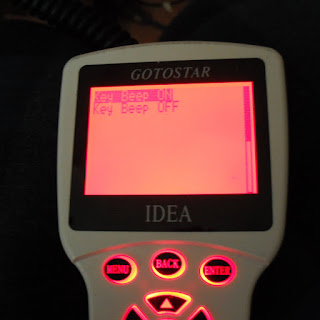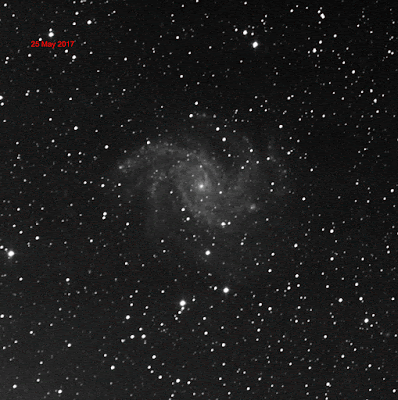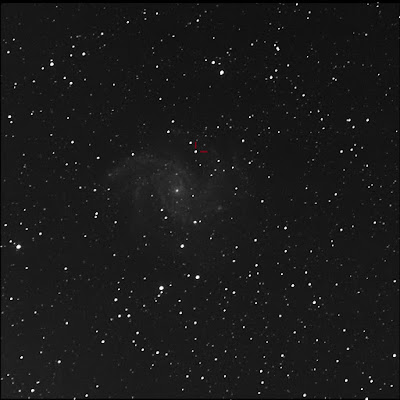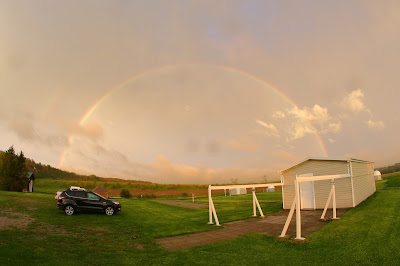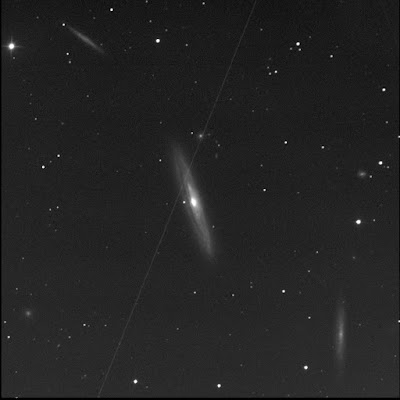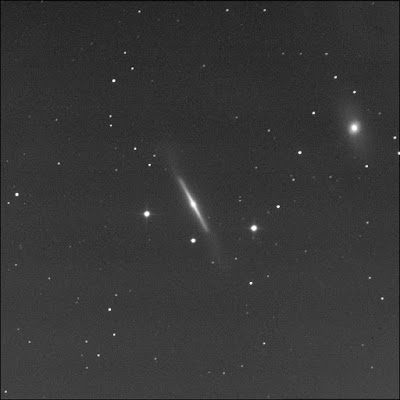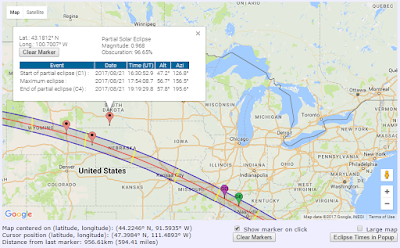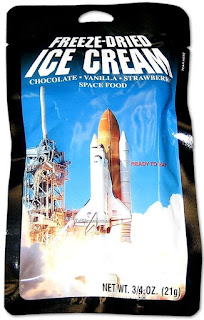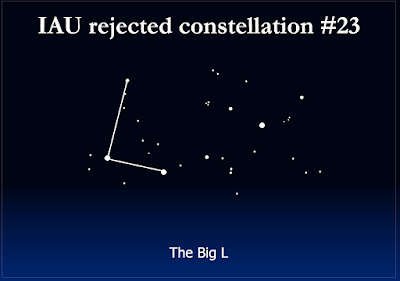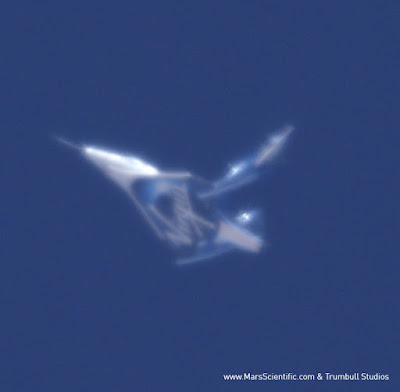Wednesday, May 31, 2017
tested zooming
I read about this Backyard feature—using a mouse roller wheel—some where but never got 'round to trying it. I just zoomed in, while in Frame & Focus, well past 100%. It worked! In fact, I just kept going. After a time I was at over 5000%. Wow. I wondered how far one could go? That said, it felt logarithmic. After 1500%, it seemed to have little effect. I think this trick will be very useful during astrophotography.
Labels:
Backyard EOS,
photography
Tuesday, May 30, 2017
shared GoToStar notes
I contacted Arnold to ask about the GoToStar mount he had recently pulled out of storage for RASC member use and for star parties. I encouraged him to ask me questions, if necessary, relaying that I had a lot of experience with the IDEA (iOptron) system.
He forwarded a report he had written up on the 'scope and mount. I provided a link to my general notes.
I said I was intrigued by him remarks about not being able to do a 3-star alignment. I told him I could on mine but suspected this was because I had updated the firmware version. But I also said it might be moot for when I tried the 3-star process I actually experienced poor pointing.
He said he could not find a way to set the slew rate. I told him I thought it was a simple matter of hitting a number key. Suggested that he review the "keys" section of my general notes page for more keypad options.
He also observed that his controller was noise, beeping loudly on key presses. I shared that I thought that adjustable...
Shared my suggestion of covering the built-in white LED light with a small piece of red film. Told him I had actually changed the red/green LED on the motor box for an orange/red!
I warned him that some of the named stars were wonky.
§
I shot some photos of my menu list.
There was an option for controlling the beep sounds.
Simple choices obviously. But clearly the hand controller (using firmware version 090630) allowed one to operate in stealth mode.
He forwarded a report he had written up on the 'scope and mount. I provided a link to my general notes.
I said I was intrigued by him remarks about not being able to do a 3-star alignment. I told him I could on mine but suspected this was because I had updated the firmware version. But I also said it might be moot for when I tried the 3-star process I actually experienced poor pointing.
He said he could not find a way to set the slew rate. I told him I thought it was a simple matter of hitting a number key. Suggested that he review the "keys" section of my general notes page for more keypad options.
He also observed that his controller was noise, beeping loudly on key presses. I shared that I thought that adjustable...
Shared my suggestion of covering the built-in white LED light with a small piece of red film. Told him I had actually changed the red/green LED on the motor box for an orange/red!
I warned him that some of the named stars were wonky.
I shot some photos of my menu list.
There was an option for controlling the beep sounds.
Simple choices obviously. But clearly the hand controller (using firmware version 090630) allowed one to operate in stealth mode.
Monday, May 29, 2017
follow the shadow
I had seen the "flyover" video briefly before but I tracked it down. The Eclipse2017.org web site made a special video presentation (available on Vimeo) showing in three dimensions the shadow moving over the United States. It's as if you're in an airplane zipping along behind the Moon's shadow. A neat effect. It includes a time indicator, shows the state and county borders, town and city names, etc.
Labels:
Moon,
occultation,
planning,
solar
article on aurora
Nicole wrote an article for the CBC on the recent aurora borealis spectacle. She featured imagery from many RASCals.
Sunday, May 28, 2017
viewed bright dog (Bradford)
During our walk, we spotted a very bright sun dog to the right of the Sun. Very colourful, prismatic. It persisted for a long time. Heavy clouds to the left prevented the display but much of the 22° halo was visible. At the top of the halo, there was a faint parry arc aka upper suncave. And up high the was circumzenith arc, also with a hint of colour. A few minutes later, a diffuse pillar emerged, above and below the Sun's position.
Labels:
friends and family,
naked,
solar,
weather
prism overhead (Bradford)
On reading a Facebook post about parhelia, I looked up from the deck. Ah ha! A faint rainbow ring. Rhonda spotted it with some coaching on my part.
[ed: Corrected typos on 8 May.]
[ed: Corrected typos on 8 May.]
Labels:
friends and family,
naked,
solar,
weather
Saturday, May 27, 2017
looked for aurora (Trenton)
When I saw the flurry of messages in email and Facebook about possible aurora, I headed outside. I deeked into the shadows cast by the extremely bright hotel rooftop lights and looked north.
I saw many stars, the Big Dipper, three stars of Little Dipper, Cygnus rising, Gemini setting. Saw an orange coloured northbound satellite. But no aurora, sadly.
Lamented not packing my camera gear...
§
Enjoyed Drew's images.
Super Genius got great shots (from the Secret Place near Lake Simcoe).
Ian W captured good data (from the CAO).
Malcolm got amazing images (from the Quinte area).
Steve made some mesmerising video (from the CAO).
§
Venci shared a colourful shot from the CAO.
I saw many stars, the Big Dipper, three stars of Little Dipper, Cygnus rising, Gemini setting. Saw an orange coloured northbound satellite. But no aurora, sadly.
Lamented not packing my camera gear...
§
Enjoyed Drew's images.
Super Genius got great shots (from the Secret Place near Lake Simcoe).
Ian W captured good data (from the CAO).
Malcolm got amazing images (from the Quinte area).
Steve made some mesmerising video (from the CAO).
§
Venci shared a colourful shot from the CAO.
Labels:
aurora,
light pollution
to the Moon (Trenton)
We noted clear skies on leaving the hall. I spotted the crescent Moon off in the west.
Back at the hotel, as we parked in the lower lot, I spotted Luna again, just below the Canadian Forces monument.
Alcatel Lume, OpenCamera, Photoshop.
Canadair Freedom Fighter, CF-116A/F-5. Note to be confused with the Lockheed F-104 Starfighter.
Back at the hotel, as we parked in the lower lot, I spotted Luna again, just below the Canadian Forces monument.
Alcatel Lume, OpenCamera, Photoshop.
Canadair Freedom Fighter, CF-116A/F-5. Note to be confused with the Lockheed F-104 Starfighter.
Labels:
friends and family,
Moon,
naked,
photography
Friday, May 26, 2017
blinked SN2017eaw
With Photoshop, I made an animated GIF to blink the supernova. July 2016 vs May 2017.
I hope to get some more images as it dims so to make a longer movie...
I hope to get some more images as it dims so to make a longer movie...
Labels:
supernovae
Binary Universe: cosmic debris spotting
The June RASC Journal was uploaded to the members area.
I am really looking forward to reading Blair Macdonald's column. This issue he's diving into masks in Photoshop, a feature I still struggle with. Levy's column is on eclipses! Percy talks about life-long learning.
My software review column Binary Universe featured the Meteor Shower Calendar app for iOS and Android.
It's a good tool for people who would like reminders or notifications for upcoming meteor showers. I reviewed the versions on iOS (1.3.1) and Android (2.3.5).
I am really looking forward to reading Blair Macdonald's column. This issue he's diving into masks in Photoshop, a feature I still struggle with. Levy's column is on eclipses! Percy talks about life-long learning.
My software review column Binary Universe featured the Meteor Shower Calendar app for iOS and Android.
It's a good tool for people who would like reminders or notifications for upcoming meteor showers. I reviewed the versions on iOS (1.3.1) and Android (2.3.5).
Thursday, May 25, 2017
captured supernova 2017eaw (Halifax)
w00t! I got it. BGO imaged the Fireworks galaxy aka NGC 6946 with active supernova 2017eaw.
Luminance only, 60 seconds subexposures, 10 stacked shots. FITS Liberator, Paint. North is up; left is east.
I first imaged this galaxy last year.
Luminance only, 60 seconds subexposures, 10 stacked shots. FITS Liberator, Paint. North is up; left is east.
I first imaged this galaxy last year.
Labels:
Apogee,
Arp,
galaxies,
NGC,
photography,
supernovae
Wednesday, May 24, 2017
enjoyed the meeting(s)
Attended the RASC Toronto Centre meeting tonight, live, first time in a long time. Brutal traffic made Tony and I late, unfortunately missing Andy's This Sky This Month. Alex was talking about Project Starshot. Byron talked about and showed some of his meteorites. Alan showed his "easy off" design for solar filters for binoculars or small refractors.
It was good to catch up with Mr Markov, Ralph, Phil, Allard, Peter H, Shawn, Jeff, Peter R, and John.
I was able to connect with Mr Blackman. He's happy.
It was good to catch up with Mr Markov, Ralph, Phil, Allard, Peter H, Shawn, Jeff, Peter R, and John.
I was able to connect with Mr Blackman. He's happy.
Labels:
RASC
Monday, May 22, 2017
scuppered
I really had bad luck this weekend. It was clear late Friday night and I knew it was likely the best night and I should have gone out but I didn't. And tonight, lots of stars visible when I arrived home after dropping off Cam, but I was too tired, already yawning, and then considered the busy week ahead. Damn.
but 3 visible (Vaughan)
While Cam checked his route planning app, I looked up. About 3 stars were visible from the bright parking lot outside the spaceship-shaped Cineplex. And Jupiter. Terrible amount of wasted light.
Labels:
light pollution,
naked,
weather
did some work at the CAO
Did some pre-work party activities at the Carr Astronomical Observatory. Helped the weekend crew get the ride-on mowers up and running. Specifically installed a new cutting deck v-belt with Lora and Rhonda's assistance. Shored the chute bottom bracket on Stargrazer. Took one storm window off (and in that short time, took at least two black fly bites on my hands). Applied Windows OS updates. Updated the electrical panel labels table and verified circuit changes. Installed a fresh red light bulb in the garage. And fixed a toilet.
Labels:
RASC,
volunteering
Sunday, May 21, 2017
double rainbows (Blue Mountains)
I spotted a rainbow out the kitchen window. It grew brighter as we gathered on the back step. Then brighter still. A rather bright secondary rainbow appeared. It was impressive. When I returned with my camera and wide angle lens, it was fading.
Canon 40D, Rokinon 8mm, 1/500, ISO 800, aperture unknown, RAW, manually focused, Digital Photo Professional 4.6.10.0.
Canon 40D, Rokinon 8mm, 1/500, ISO 800, aperture unknown, RAW, manually focused, Digital Photo Professional 4.6.10.0.
Labels:
photography,
solar,
weather
Saturday, May 20, 2017
gathered photons from NGC 4216 (Halifax)
The automated Burke-Gaffney Observatory procured another RASC Finest NGC for me, 4216 this time. This object is a fantastic edge-on spiral galaxy in Virgo, surrounded by many other galaxies. Sadly, a satellite went through.
Luminance only, 60 seconds subexposures, 10 stacked shots. FITS Liberator, GIMP. North is up; east is left.
The view of NGC 4216 is tantalising with the halo around the core and lumpy dark lanes in the tightly wound disc.
Round PGC 39247 is just at the top edge of the grand spiral, due north of 4216's bright core.
Immediately to the right or west of 39247 is a tiny round faint fuzz ball: LEDA 1425624.
To the south-west, there appears to be another little galaxy but this is not identified as such in SkyTools 3 Professional.
Further south-west from PGC 39247 is a little streak of light. This is LEDA 1425156.
IC 771, a pretty but small barred spiral galaxy, is to the west of 4216.
LEDA 1422933 is due south of 771, a small fuzzy oval.
The big edge-on spiral to the south-west of 4216 is NGC 4206. Structure is clearly visible in this neighbouring galaxy.
South-east of 4206, at the edge of the image frame, is a round fuzzy. This is LEDA 1419741.
LEDA 1419993 is visible south-east of the NGC 4216. A small round lint ball to the east of star GSC 00879-0604.
Almond-shaped LEDA 1420615 is north-east of LEDA 1419993.
Further along, in a line with LEDA 1420615 and LEDA 1419993, is MCG 2-31-76. It is large, diffuse, nearly round.
North-east of the grand spiral is tiny round LEDA 1425739.
Finally, the long streak of NGC 4222 is to the north-east. Three big spirals in the view!
§
Wikipedia link: NGC 4216.
The view of NGC 4216 is tantalising with the halo around the core and lumpy dark lanes in the tightly wound disc.
Round PGC 39247 is just at the top edge of the grand spiral, due north of 4216's bright core.
Immediately to the right or west of 39247 is a tiny round faint fuzz ball: LEDA 1425624.
To the south-west, there appears to be another little galaxy but this is not identified as such in SkyTools 3 Professional.
Further south-west from PGC 39247 is a little streak of light. This is LEDA 1425156.
IC 771, a pretty but small barred spiral galaxy, is to the west of 4216.
LEDA 1422933 is due south of 771, a small fuzzy oval.
The big edge-on spiral to the south-west of 4216 is NGC 4206. Structure is clearly visible in this neighbouring galaxy.
South-east of 4206, at the edge of the image frame, is a round fuzzy. This is LEDA 1419741.
LEDA 1419993 is visible south-east of the NGC 4216. A small round lint ball to the east of star GSC 00879-0604.
Almond-shaped LEDA 1420615 is north-east of LEDA 1419993.
Further along, in a line with LEDA 1420615 and LEDA 1419993, is MCG 2-31-76. It is large, diffuse, nearly round.
North-east of the grand spiral is tiny round LEDA 1425739.
Finally, the long streak of NGC 4222 is to the north-east. Three big spirals in the view!
§
Wikipedia link: NGC 4216.
Labels:
Apogee,
galaxies,
NGC,
photography
clear (Blue Mountains)
Peeked outside. Wow. Very clear. Called Rhonda out. We took in many constellations. I specifically looked at Leo. Many more stars visible. A mag 6 sky?
Labels:
constellations,
naked,
stars
Friday, May 19, 2017
no data on NGC 6946
While BGO did an imaging run last night, it did not queue up my Fireworks galaxy job. Sadly, no one else imaged it.
Labels:
Arp,
didn't,
supernovae
Thursday, May 18, 2017
checked results
Checked the Globe at Night results map. It was easier to see the dots on the zoomed-out satellite view. Not a lot of reports from Canada...
Showed Rhonda the results.
Showed Rhonda the results.
Labels:
light pollution
took a reading (Bradford)
I noticed it was very clear as I recovered the recycling bins from the curb. So I put the red film on the tablet screen, opened the Globe at Night page, grabbed a lawn chair, and plunked down in the dark backyard with a good view of Leo. Rhonda joined me a few minutes later. Helped Hawkeye with the main constellation stick figure then we went deeper.
Spotted 31 Leonis (4.4) below Regulus. Spotted iota (4.0) below Chertan, opposite Zosma, in the rump. Then 93 Leonis (4.5) above Denebola, forming a rectangle. Zubrah aka 72 (4.6) above Zosma and 60 Leonis (4.4) to the right. With some effort I noted eta (5.3) between Chertan and iota. The lower stars were more challenging with the sky glow from the GTA.
Submitted our report. LM 5.
Spotted 31 Leonis (4.4) below Regulus. Spotted iota (4.0) below Chertan, opposite Zosma, in the rump. Then 93 Leonis (4.5) above Denebola, forming a rectangle. Zubrah aka 72 (4.6) above Zosma and 60 Leonis (4.4) to the right. With some effort I noted eta (5.3) between Chertan and iota. The lower stars were more challenging with the sky glow from the GTA.
Submitted our report. LM 5.
Labels:
constellations,
friends and family,
light pollution,
naked,
stars
made colour image of BU 284
Rendered multi-star system HD 167287 aka β 284 aka SAO 161217 in colour using the LRGB data from Tuesday night.
Luminance 5x10, RGB 5x5 each.
Tried something different this time in FITS Liberator. After applying the ArcSin stretch, I moved the black point slightly left to the first full dip. I moved the white point far to the right essentially including all the detected data. And I did NOT hit the Auto Scaling button. I saved the images at that point. The TIFFs looked much brighter than what I've done in the past.
Tried something different this time in FITS Liberator. After applying the ArcSin stretch, I moved the black point slightly left to the first full dip. I moved the white point far to the right essentially including all the detected data. And I did NOT hit the Auto Scaling button. I saved the images at that point. The TIFFs looked much brighter than what I've done in the past.
Simple processing in Photoshop: import, copy into layers, align, colourised each layer, set the RGB layers to screen, set the luminance layer, then a single Levels and Curves to the top, bumped the saturation 5%, and—to a copied layer—applied a 0.5 pixel blur .
This attractive image shows A, B, C, D, E, G/P, H/Q and R are all blue-white. F is a pale orange.
Hard to say what the colour is for dim S. Is it orange?!
It looks like the stars in ARA 741 are also blue-white.
Love the little string of 3 stars at the top of the image, red, orange, and blue!
§
Rhonda likes the colourful little equilateral triangle at the top-left.
This attractive image shows A, B, C, D, E, G/P, H/Q and R are all blue-white. F is a pale orange.
Hard to say what the colour is for dim S. Is it orange?!
It looks like the stars in ARA 741 are also blue-white.
Love the little string of 3 stars at the top of the image, red, orange, and blue!
§
Rhonda likes the colourful little equilateral triangle at the top-left.
Labels:
double stars,
fun
Wednesday, May 17, 2017
through high cloud (Bradford)
Jupiter's back. But it remains hazy. We saw it about 30 minutes ago but then it disappeared in high thin clouds. We turned our focus back on the fireplace.
Labels:
friends and family,
Jupiter,
naked,
planets,
weather
looked into BU 284
Dove into the Washington Double Star database.
Initially I didn't see β284 but when I checked the coordinates again and saw the RA was 18:15, I realised I was in the wrong table. Then when I found BU 284, I noted G and H companions! Ah ha. Letters beyond ST3P... I checked the locations using my Excel radar chart.
I made many discoveries.
1. The BR pair details are noted as 324 degrees and 5 arcminutes in the SkyTools 3 Pro Object Information box but the chart view has it plotted 12" away! I added a SkyMark for where it should be in the chart. Happily, this position closely matches the image from last night. WDS says 326 and 5.2. And when I calculated the AR deets, the Excel chart showed good correspondence.
2. When I took in the G and H references in the WDS I thought that this might be more stars, perhaps accounting for some of the other somewhat bright neighbours around D and P, in the busy field. But this does not appear to be the case (as will become obvious below).
3. The G star in Washington Double Star is what SkyTools calls P. Ah, OK.
4. Finally, the H star is WDS is what ST3 calls Q. Right.
Initially I didn't see β284 but when I checked the coordinates again and saw the RA was 18:15, I realised I was in the wrong table. Then when I found BU 284, I noted G and H companions! Ah ha. Letters beyond ST3P... I checked the locations using my Excel radar chart.
I made many discoveries.
1. The BR pair details are noted as 324 degrees and 5 arcminutes in the SkyTools 3 Pro Object Information box but the chart view has it plotted 12" away! I added a SkyMark for where it should be in the chart. Happily, this position closely matches the image from last night. WDS says 326 and 5.2. And when I calculated the AR deets, the Excel chart showed good correspondence.
2. When I took in the G and H references in the WDS I thought that this might be more stars, perhaps accounting for some of the other somewhat bright neighbours around D and P, in the busy field. But this does not appear to be the case (as will become obvious below).
3. The G star in Washington Double Star is what SkyTools calls P. Ah, OK.
4. Finally, the H star is WDS is what ST3 calls Q. Right.
So it seems the WDS does not have P and Q references; rather it uses G and H. But still both use S.
Made me wonder if there are other identified WDS pairs in the same spot. Made a note to look.
§
No other entries except ARA 743CQ which I calculated to be at a 71° angle from A with a separation of 21.4".
§
No other entries except ARA 743CQ which I calculated to be at a 71° angle from A with a separation of 21.4".
Labels:
double stars,
science
plotted elements
At long last, I built an Excel file to help with the plotting of double star elements. After reviewing a tutorial at the Ozgrid Business Applications website, I rolled out my radar chart. Really happy with the result.
I can rapidly plunk in a set of position angle and separation data (up to 24 entries, in any order) and the workbook produces an automatically scaled representation.
This will be very helpful when I'm trying to corroborate data values against something I've seen visually or photographed.
I can rapidly plunk in a set of position angle and separation data (up to 24 entries, in any order) and the workbook produces an automatically scaled representation.
This will be very helpful when I'm trying to corroborate data values against something I've seen visually or photographed.
Labels:
double stars,
fun,
science
no one tried
I checked the BGO log to see if anyone had gone after NGC 6946. Nope. Too bad.
Labels:
Apogee,
Arp,
galaxies,
photography,
supernovae
imaged HD 167287 (Halifax)
I had noted the Clear Sky Chart for Halifax was looking good after midnight. In fact, the BGO robot imaged a double star for me. The multi-star system HD 167287 aka β 284 aka SAO 161217 in Sagittarius. The image seems a little soft. Seeing was not great at the time...
Luminance only, 5 seconds subexposures, 10 stacked shots. FITS Liberator, Paint.NET. North is up; east is left.
The primary star is magnitude 7.1; the dimmest element, S, is mag. 13.5. The target was low in the sky... below 30° altitude. In a rich star field.
I first observed this system on my birthday in 2016. Did not see the S star and I totally missed the F star.
In this image, A is the brightest star near centre. B, a medium bright star, is due north a short distance away. C is nearly due east about twice the AB separation. The D ally is south, twice the AC split, and very slightly to the west. D is much brighter than B. E is further afield, beyond D, slightly east, and slightly dimmer than D. Colleague F is far away to the west, perhaps 1.5 times the AE distance, about the brightness of B. Sidekick P is below or south of A, almost touching, dimmer than B. Q is between C and B, the same brightness as C. Friend R is north-west of B, touching B, dimmer. It appears rather close to B which is a different position than plotted by SkyTools 3 Pro. If I had to guess, I'd say it is actually B who's moving, away from Q and toward R. And finally, S. It is visible, barely, east of A, due south of Q. But it is very dim. I believe it is in the magnitude 15 bucket which is probably why I didn't see it last fall.
So, this image was very successful, in that I was able to pull out all the accomplices.
It is curious to me why the somewhat bright stars, about the same intensity as R, sprinkled between P and D, are not part of this system. Or is that why there's a gap in the lettering scheme?
Wide double star ARA 741 in a nearly north-south orientation is obvious beyond F, west of F.
§
Did some more digging into the BU 284 system.
§
Assembled in colour on 18 May '17.
Luminance only, 5 seconds subexposures, 10 stacked shots. FITS Liberator, Paint.NET. North is up; east is left.
The primary star is magnitude 7.1; the dimmest element, S, is mag. 13.5. The target was low in the sky... below 30° altitude. In a rich star field.
I first observed this system on my birthday in 2016. Did not see the S star and I totally missed the F star.
In this image, A is the brightest star near centre. B, a medium bright star, is due north a short distance away. C is nearly due east about twice the AB separation. The D ally is south, twice the AC split, and very slightly to the west. D is much brighter than B. E is further afield, beyond D, slightly east, and slightly dimmer than D. Colleague F is far away to the west, perhaps 1.5 times the AE distance, about the brightness of B. Sidekick P is below or south of A, almost touching, dimmer than B. Q is between C and B, the same brightness as C. Friend R is north-west of B, touching B, dimmer. It appears rather close to B which is a different position than plotted by SkyTools 3 Pro. If I had to guess, I'd say it is actually B who's moving, away from Q and toward R. And finally, S. It is visible, barely, east of A, due south of Q. But it is very dim. I believe it is in the magnitude 15 bucket which is probably why I didn't see it last fall.
So, this image was very successful, in that I was able to pull out all the accomplices.
It is curious to me why the somewhat bright stars, about the same intensity as R, sprinkled between P and D, are not part of this system. Or is that why there's a gap in the lettering scheme?
Wide double star ARA 741 in a nearly north-south orientation is obvious beyond F, west of F.
§
Did some more digging into the BU 284 system.
§
Assembled in colour on 18 May '17.
Labels:
Apogee,
double stars,
photography
Tuesday, May 16, 2017
checked the logs
I checked the BGO logs for the Fireworks galaxy. I imaged it last summer. No one had had a look since February. Nothing in our images...
Labels:
Apogee,
galaxies,
photography,
supernovae
Ian wants to have a go
Ian W pinged me about the supernova. He forwarded the AAVSO bulletin. He's keen to visually spot it and get some photons in a detector. Indeed.
Labels:
friends and family,
photography,
supernovae
Monday, May 15, 2017
missed a supernova
On Facebook, Eric lamented not imaging NGC 6946. Apparently a supernova just went off in the Fireworks galaxy.
Labels:
Arp,
photography,
supernovae
added a SN to the list
In hopes of doing some backyard observing, I made a list in SkyTools. Included lots of double stars, given the lingering bright Moon. Updated the current data sets, comets, supernova, etc. while I was at it. Noted a bright supernova called SN 2017 eaw, around magnitude 12. Huh. In Cepheus. Maybe we'd be able to see that. I could show Rhonda her first exploding star...
Labels:
double stars,
friends and family,
planning,
supernovae
Sunday, May 14, 2017
IDed Scorpius
rho spotted a bright orange star flickering madly close to the horizon in the south-east. Were there 3 stars in a line to the right of it? Yes. Antares in Scorpius. Summer is coming.
Labels:
constellations,
education,
friends and family,
stars
caught NGC 4699 (in Halifax)
The BGO robot imaged NGC 4699. Another galaxy in Virgo. One of the RASC Finest NGCs. Zoomed out, the first impression is an elliptical; zoomed in, there are hints of spiral arms.
Luminance only, 60 seconds subexposures, 10 stacked shots. FITS Liberator, GIMP. North is up; east is left.
LEDA 1001825 is to the north-west. Round and small, it is extremely faint.
LEDA 1000452 is nearly due west. Looks like an edge-on spiral. Small. Very faint again.
LEDA 998398 is to the south-west. A very faint oval smudge.
LEDA 998875 is to the south-south-east. Again, very faint. An elongated patch.
Bright, round LEDA 170207 is to the south-east.
LEDA 1000221 is to the east-south-east. A small almond shape.
LEDA 1000538 is east of the big galaxy. It is a dim round ball of lint above GSC 05535-1552.
LEDA 183306 is east of NGC 4699. Small but bright. North-east of TYC 05535-1227 1.
GSC 05535-1424, to the east, looks like it could be part of a double star.
There's a bright pair in the field, to the south-east, not shown in SkyTools! Weird. [ed: They appear in Aladin.]
§
Wikipedia link: NGC 4699.
Luminance only, 60 seconds subexposures, 10 stacked shots. FITS Liberator, GIMP. North is up; east is left.
LEDA 1001825 is to the north-west. Round and small, it is extremely faint.
LEDA 1000452 is nearly due west. Looks like an edge-on spiral. Small. Very faint again.
LEDA 998398 is to the south-west. A very faint oval smudge.
LEDA 998875 is to the south-south-east. Again, very faint. An elongated patch.
Bright, round LEDA 170207 is to the south-east.
LEDA 1000221 is to the east-south-east. A small almond shape.
LEDA 1000538 is east of the big galaxy. It is a dim round ball of lint above GSC 05535-1552.
LEDA 183306 is east of NGC 4699. Small but bright. North-east of TYC 05535-1227 1.
GSC 05535-1424, to the east, looks like it could be part of a double star.
There's a bright pair in the field, to the south-east, not shown in SkyTools! Weird. [ed: They appear in Aladin.]
§
Wikipedia link: NGC 4699.
Labels:
Apogee,
galaxies,
NGC,
photography
Saturday, May 13, 2017
imaged NGC 4762 and 4754 (in Halifax)
BGO also imaged NGC 4762 (with NGC 4754) for me. Galaxies in Virgo. 4762 is another one of the RASC Finest NGCs. It looks like an edge-on spiral but there are no dust lanes. Wisps are very evident along the other edges.
Luminance only, 60 seconds subexposures, 10 stacked shots. FITS Liberator, GIMP. North is up; east is left.
LEDA 1391072 is a tiny round fuzzy to the west.
LEDA 1389947 is visible to the east. There seem to be two small round objects here.
§
Imaged again on 23 Mar '20 with a better result.
§
Wikipedia link: NGC 4762.
Luminance only, 60 seconds subexposures, 10 stacked shots. FITS Liberator, GIMP. North is up; east is left.
LEDA 1391072 is a tiny round fuzzy to the west.
LEDA 1389947 is visible to the east. There seem to be two small round objects here.
§
Imaged again on 23 Mar '20 with a better result.
§
Wikipedia link: NGC 4762.
Labels:
Apogee,
galaxies,
NGC,
photography
nabbed the Lost Galaxy (in Halifax)
Clear skies out east! The Burke-Gaffney Observatory fired up and started imaging. I had RASC Finest NGC 4535 aka the Lost Galaxy in the hopper. A fantastic face-on spiral galaxy in Virgo. The central part of the spiral is amazing. It looks like there are lots of star forming regions along the arms.
Luminance only, 60 seconds subexposures, 10 stacked shots. FITS Liberator, GIMP. North is up; east is left.
LEDA 1343342 is the bright oval to the north, slightly west.
LEDA 1342675 is a tiny little streak between 1343342 and the big galaxy, slightly further to the west.
LEDA 1340665 is a round fuzz ball to the south-west, close to the big spiral.
MCG 1-32-98 is much further away to the south-west, a large patch of light, not round.
LEDA 1336640 is a very small thin fuzzy, perhaps an edge-on spiral, to the south-south-west, at the very bottom edge of the frame.
LEDA 1342835 is to the north-east from the NGC galaxy, due east from the star GSC 00874-0721.
East of 1342835 is another fuzzy but SkyTools 3 Professional does not identify it.
There are two sets of stars, south of the Lost Galaxy, that look like doubles but are not IDed as such in ST3P, one pair with TYC 00874-0826 1 and one with TYC 00874-0667 1.
§
Wikipedia link: NGC 4535.
Luminance only, 60 seconds subexposures, 10 stacked shots. FITS Liberator, GIMP. North is up; east is left.
LEDA 1343342 is the bright oval to the north, slightly west.
LEDA 1342675 is a tiny little streak between 1343342 and the big galaxy, slightly further to the west.
LEDA 1340665 is a round fuzz ball to the south-west, close to the big spiral.
MCG 1-32-98 is much further away to the south-west, a large patch of light, not round.
LEDA 1336640 is a very small thin fuzzy, perhaps an edge-on spiral, to the south-south-west, at the very bottom edge of the frame.
LEDA 1342835 is to the north-east from the NGC galaxy, due east from the star GSC 00874-0721.
East of 1342835 is another fuzzy but SkyTools 3 Professional does not identify it.
There are two sets of stars, south of the Lost Galaxy, that look like doubles but are not IDed as such in ST3P, one pair with TYC 00874-0826 1 and one with TYC 00874-0667 1.
§
Wikipedia link: NGC 4535.
Labels:
Apogee,
galaxies,
NGC,
photography
starry sky in bloom
Rhonda was looking for some flowers for her deck so we visited a couple of shops in town. I spotted on astronomy-themed flower at Home Depot.
Indigo Starry Sky petunias. Sometimes known as Night Sky. Shot with an ASUS MemoPad.
Indigo Starry Sky petunias. Sometimes known as Night Sky. Shot with an ASUS MemoPad.
Friday, May 12, 2017
found the interactive map
Found it, again! I had seen the interactive Google Map for the August 2017 solar eclipse path before but then lost track of it. While checking out the EclipseWise.com website and examining the index of the summer eclipse page, I spotted it: the Interactive Google Eclipse Map.
The key feature is that when you click on the map in a particular location, it will drop at marker and then in the pop-up show you the circumstances of the eclipse.
The screen grab above is not dynamic; it is a static snapshot.
If you're outside of the path, of course, you'll only experience a partial eclipse and only see first and fourth contact. When you choose a point in the shadow path, you'll enjoy all four key moments.
I like how the tool shows the times along with the altitude and azimuth of the Sun and the magnitude and obscuration values. The map also shows the points of greatest duration and greatest eclipse.
The key feature is that when you click on the map in a particular location, it will drop at marker and then in the pop-up show you the circumstances of the eclipse.
The screen grab above is not dynamic; it is a static snapshot.
If you're outside of the path, of course, you'll only experience a partial eclipse and only see first and fourth contact. When you choose a point in the shadow path, you'll enjoy all four key moments.
I like how the tool shows the times along with the altitude and azimuth of the Sun and the magnitude and obscuration values. The map also shows the points of greatest duration and greatest eclipse.
Labels:
Moon,
occultation,
planning,
solar
Monday, May 08, 2017
captured NGC 4026 (Halifax)
The rains had stopped. The Burke-Gaffney Observatory robot started imaging, first time in days. It acquired NGC 4026 for me. A edge-on galaxy in Ursa Major. It is one of the RASC Finest NGCs. Slight gradient. Not a sharp image unfortunately.
Luminance only, 60 seconds subexposures, 10 stacked shots. FITS Liberator, Paint.NET. North is up; east is left.
The core of the galaxy is bright. The disc of the galaxy is soft and diffuse. No apparent structure. Similar to the Spindle Galaxy (NGC 3115).
LEDA 2382547 is visible as a dim small oval to the south-west, just beyond the faint right-angle triangle of stars.
The core of the galaxy is bright. The disc of the galaxy is soft and diffuse. No apparent structure. Similar to the Spindle Galaxy (NGC 3115).
LEDA 2382547 is visible as a dim small oval to the south-west, just beyond the faint right-angle triangle of stars.
Labels:
Apogee,
galaxies,
NGC,
photography
Sunday, May 07, 2017
saw Moon very near Jupiter (Bradford)
Peeked up while takin' the garbage out. Smattering of clouds, too many to compel me to set up a 'scope. Moonlit backyard, no surprise, from the gibbous orb. Oh ho. Bright point near Luna.
Called rho out into the cool air. She figured it out, after a nudge. We measured the gap between Jupiter and the Moon with extended pinkies: about 2 to 2-1/2 degrees directly to the right. Spica below, getting blotted by our gas clouds. Arcturus up high to the south-east. Straight up over the house was an upside-down large dipper. As the clouds slide past, the colourful halo around the Moon bloomed.
Grabbed my old Bushnells from the kitchen in hopes of spotting Galilean moons but I was shaking too much or there was too much bright cloud. rho tried too. She found the gas giant very bright and enjoyed the surface details on our neighbour.
Labels:
binoculars,
constellations,
Jupiter,
Moon,
naked,
planets,
stars
Saturday, May 06, 2017
stumbled across fusion
Stumbled across an article entitled Burnaby’s General Fusion taps new CFO, VP. What? What?! We're doing fusion? There's a company called General Fusion? It's in Canada?! Cool! Wow.
Skimmed the business oriented article quickly. Learned that GF launched in 2002.
The new CFO Bruce Colwill has experience with leading companies through IPOs. The new VP Francois Beland will work on government relations and corporate affairs.
That's pretty exciting.
I had no idea.
Skimmed the business oriented article quickly. Learned that GF launched in 2002.
The new CFO Bruce Colwill has experience with leading companies through IPOs. The new VP Francois Beland will work on government relations and corporate affairs.
That's pretty exciting.
I had no idea.
processed HR 6246 in colour
Processed HR 6246 aka STF 2103 in full colour using the LRGB data from 19 Mar '17.
FITS Liberator and Photoshop. North is up; east is left. Luminance 6x10, each RGB 6x5.
A looks blue-white. B is merged into A therefore cannot be isolated for colour. C, to the south-west, looks white or pale yellow. D, to the south-east, looks white.
FITS Liberator and Photoshop. North is up; east is left. Luminance 6x10, each RGB 6x5.
Labels:
double stars
Thursday, May 04, 2017
turned off tilt
Of late, I have found the tilt-point option in SkySafari somewhat annoying. Perhaps it is because there have been many occasions where I've been demonstrating something, showing a simulated view of the sky, and, invariably, I've been facing a different direction. By way of example, I often show the southern sky while facing north. And it seemed that any slight movement, shaking or tilting, would cause the automatic pointing in SkySafari to activate with the northern sky snapping into view.
This, ironically, is possibly my favourite feature but sometimes I don't want it active! The very frustrating part was that tapping the Compass icon didn't seem to do anything permanently. A moment later, as I moved the tablet, the auto-pointing would kick in. Gar!
Checked the support page today and found a note. So I disabled the Tilt to Use option in Settings, Coordinates, Compass. It seems to work. It does not seem to automatically activate; only when I tap the Compass icon does it operate. Good. Thanks. I'll do it manually now.
This, ironically, is possibly my favourite feature but sometimes I don't want it active! The very frustrating part was that tapping the Compass icon didn't seem to do anything permanently. A moment later, as I moved the tablet, the auto-pointing would kick in. Gar!
Checked the support page today and found a note. So I disabled the Tilt to Use option in Settings, Coordinates, Compass. It seems to work. It does not seem to automatically activate; only when I tap the Compass icon does it operate. Good. Thanks. I'll do it manually now.
Wednesday, May 03, 2017
added filtering to doubles table
After testing in Chrome (Windows, Android) and Edge (Windows), I completed the revamp of my double stars life list page. Actually, I broke it into two parts. The original page has been turned into a simple, short introduction, with the existing Catalog (discoverer) reference.
I made a new page without the menu and transferred the table of double and multiple stars life list elements here. This new page, in jello format, allows for a wider table and more columns.
I also deployed some new Javascript and CSS assets to permit filtering. With over 1050 entries, the table was getting increasingly awkward to use. I really wanted to be able to make short lists. This new table works very well now. For example, one can filter on a constellation and reduce the list to say a half-dozen or so entries.
I made a new page without the menu and transferred the table of double and multiple stars life list elements here. This new page, in jello format, allows for a wider table and more columns.
I also deployed some new Javascript and CSS assets to permit filtering. With over 1050 entries, the table was getting increasingly awkward to use. I really wanted to be able to make short lists. This new table works very well now. For example, one can filter on a constellation and reduce the list to say a half-dozen or so entries.
Labels:
double stars,
logging
tracking well
I've been running a battery of tests on Nicole's mount since adjusting the RA axis bearing. Today, made the mount track on Castor. No issues. Was this the solution? Was it binding too much?
Labels:
Celestron,
friends and family,
repair
Tuesday, May 02, 2017
added markers
Not sure how or why I forgot to do this but finally added red reflective tape to the feet/base of the astronomy chair.
Labels:
dark adaptation,
equipment
happy binary day
Happy binary star day. The first binary system was discovered in 1780.
Labels:
double stars,
science
Monday, May 01, 2017
is it live or...?
Rhonda peeked outside. Wispy clouds but she was able to see Jupiter, Spica, Arcturus. Showed Rhonda SkySafari with the backyard custom landscape. She really enjoyed it. Really enjoyed it!
She explored a bit from the window. I turned the light off to help her adapt. She wanted to know about the stars below and right of the bright planet and star: Corvus the Crow. She spotted the 4 main stars. All around mag 2.5 to 3.0. She pointed to Crater on the screen and remarked it looked like a chalice: exactly. What was the one above Jupiter? Porrima. And further up? Auva? I doubted it. Vindemiatrix. Yes. And what about to the right of Arcturus? Muphrid. There seemed to be a good correspondence to the celestial objects and ground features.
I was happy. Height or altitude might be off a bit but overall I think it's good.
A little while later, in the simulation, I saw Graffias, Dschubba, pi Scorpii, and Antares pushing above the trees. She wasn't sure she could see them. Still low. Hazy over there. And there were bursting buds.
Simulated the rotation of the sky. rho really liked that too.
She explored a bit from the window. I turned the light off to help her adapt. She wanted to know about the stars below and right of the bright planet and star: Corvus the Crow. She spotted the 4 main stars. All around mag 2.5 to 3.0. She pointed to Crater on the screen and remarked it looked like a chalice: exactly. What was the one above Jupiter? Porrima. And further up? Auva? I doubted it. Vindemiatrix. Yes. And what about to the right of Arcturus? Muphrid. There seemed to be a good correspondence to the celestial objects and ground features.
I was happy. Height or altitude might be off a bit but overall I think it's good.
A little while later, in the simulation, I saw Graffias, Dschubba, pi Scorpii, and Antares pushing above the trees. She wasn't sure she could see them. Still low. Hazy over there. And there were bursting buds.
Simulated the rotation of the sky. rho really liked that too.
not from Canada
Rhonda asked me if we'd be able to see the contact binary system VFTS 352. Sadly, no. Not from this hemisphere.
Labels:
double stars
feathered her wings
Virgin Galactic passed a significant milestone today in testing the feather re-entry protocol. VSS Unity was piloted by Stucky and Masucci with others onboard.
This photo was captured on the ground by Mars Scientific and Trumbull Studios.
This photo was captured on the ground by Mars Scientific and Trumbull Studios.
Labels:
Virgin Galactic
Subscribe to:
Posts (Atom)

